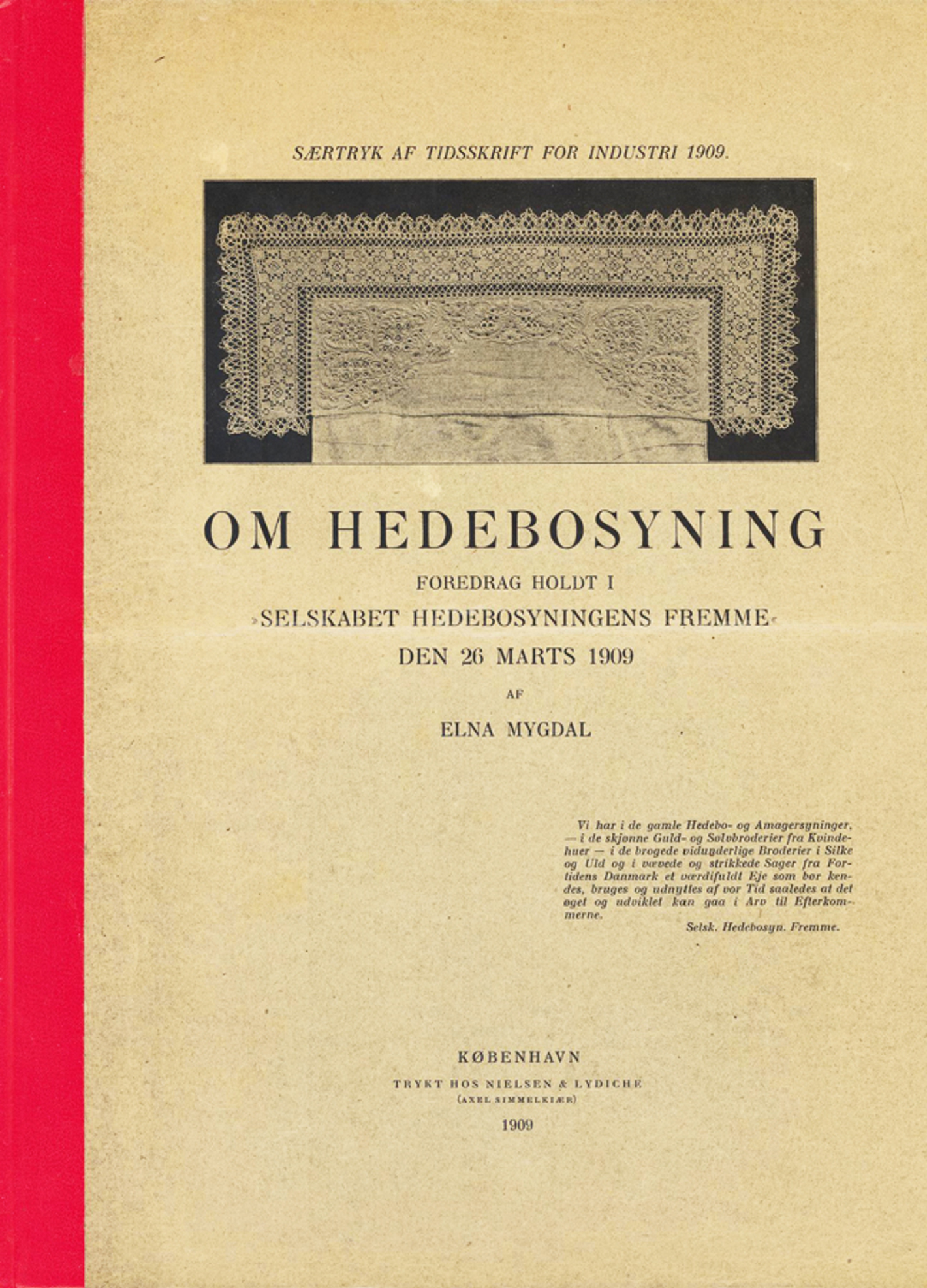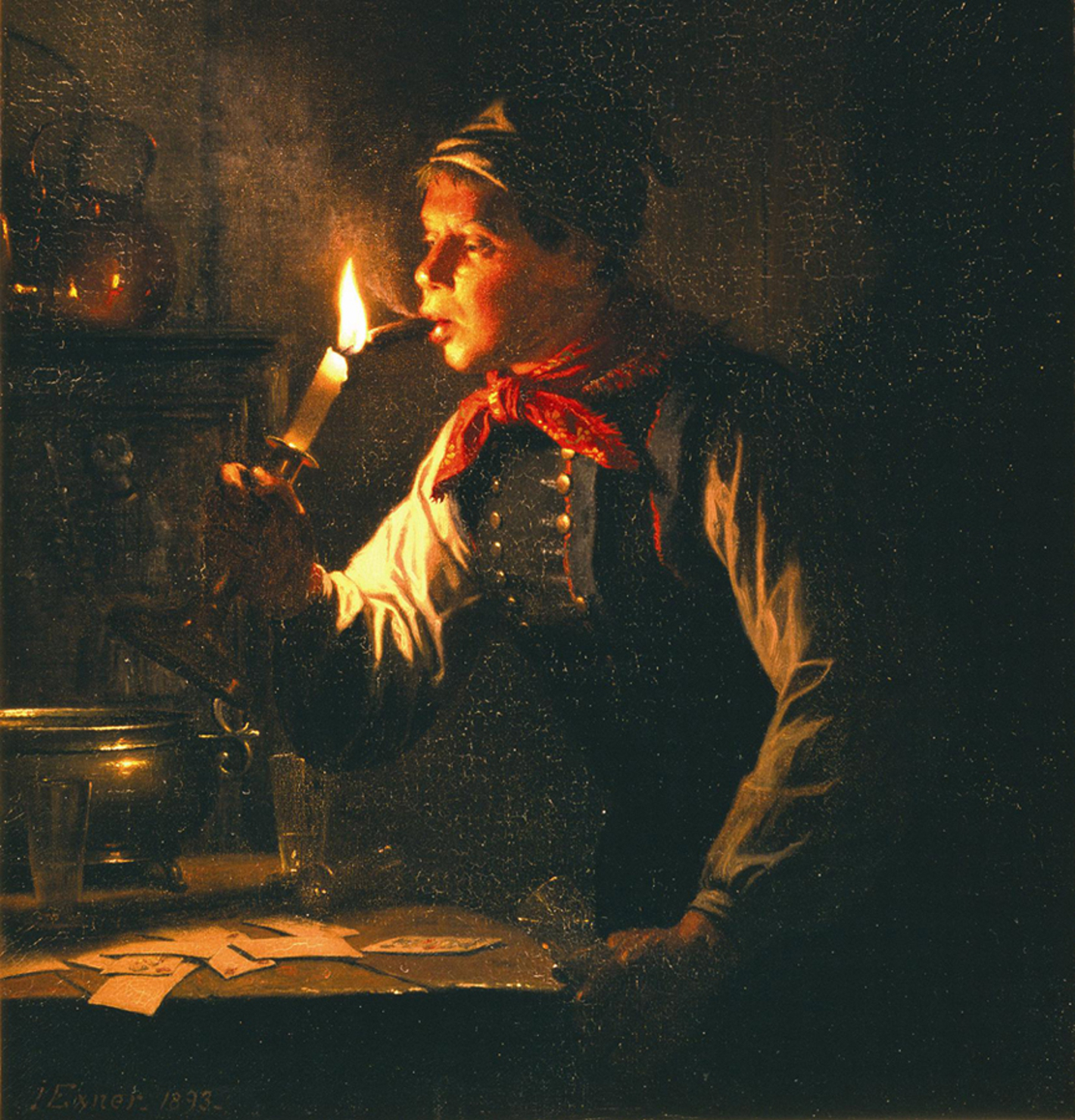Danish Folk Museum
In 1879, a large national art and industry exhibition opened, which later developed into the Danish Folk Museum, officially established in 1885. Many Hedebo embroideries were collected for both the exhibition and the museum, and they became the foundation for the Hedebo Embroidery collection at the National Museum today. The white textiles were displayed in reconstructed Hedebo rooms. Based on the collected textiles, Denmark’s first female museum keeper, Elna Mygdal, turned 'Hvidsøm' into the focus of the first scientific analysis of Hedebo Embroidery.
National Cultural Heritage
The textiles from the Hedebo area were considered expressions of a free, popular spirit and a creative impulse. The distinctive compositions and techniques of the embroidery emerged from peasant culture as a manifestation of authentic, genuine Danish culture. In 1911, the architect Martin Nyrop gave a lecture on Hedebo Embroidery to architecture students. He said: “It is the sense of beauty of the Danish peasants, one gets to know their ingenuity and diligence – and, in its good sense, – their keeping to the rules, their appreciation of the material.” Populations in other parts of Denmark also developed unique white embroidery of high technical quality, including those from Amager, Lyø, Falster, Samsø, Stevns, and Odsherred. However, Hedebo Embroidery was uniquely elevated to the status of being 'genuine Danish' from the end of the 19th century and into the early decades of the 20th century.
Spreading and Refinement
The Society for the Promotion of Hedebo Embroidery was established in 1907. Its purpose was to “spread the knowledge of Hedebo Embroidery and other ancient Danish handicrafts, and to ensure that work of this kind was taken up under artistic guidance, and thus to contribute to the refinement of today’s female arts and craft workers.” The society aimed to achieve this by establishing pattern and model collections, as well as by training and sending female teachers to educate new generations across the country. Another goal of the society was to promote the trade in embroidery, both domestically and internationally.

